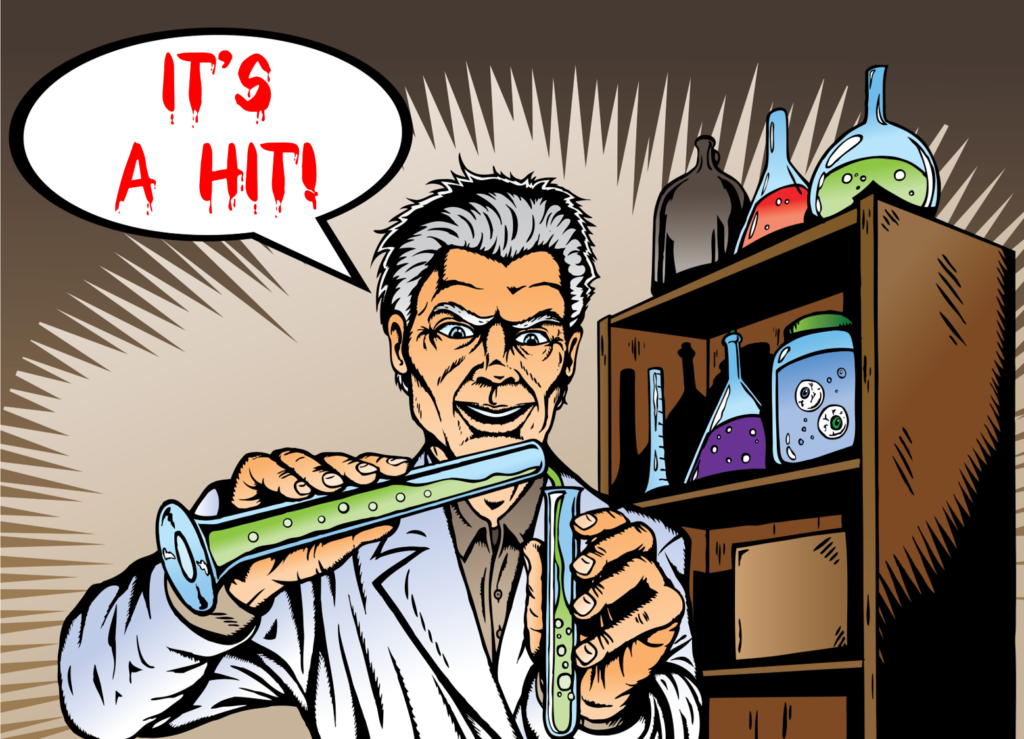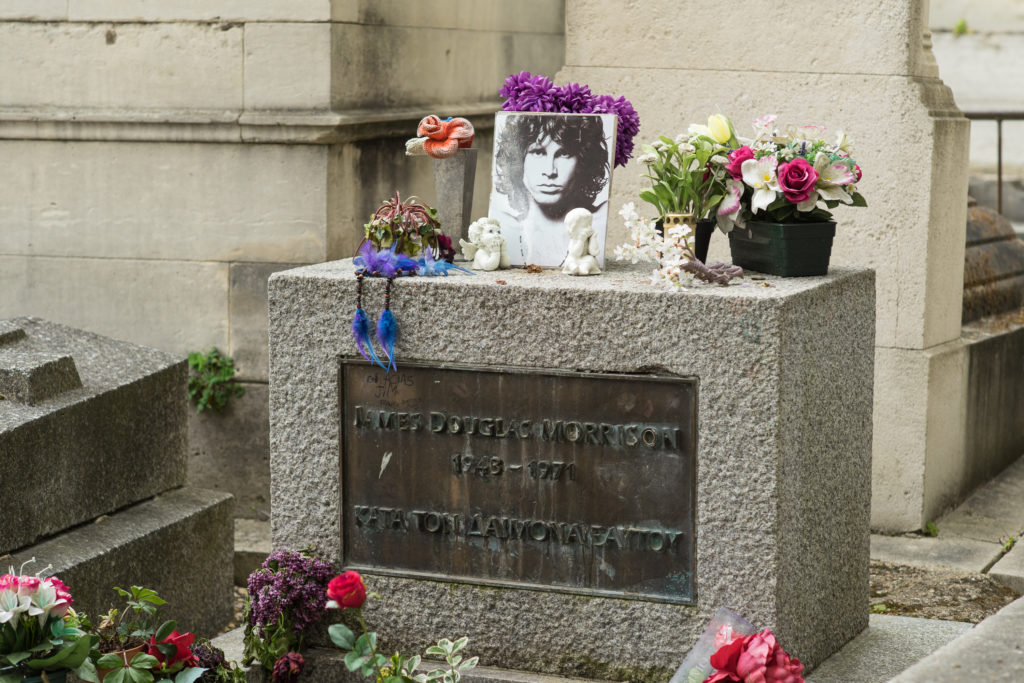
You know the weird feeling when you discover an old photo (or aircheck!) of yourself that you had forgotten existed. That’s what happened when I bumped into today’s post, a #TBT relic from exactly three years ago.
The topic? AI. And the jumping off point was an article in Rolling Stone about a new initiative to use pieces of dead artists alchemed with the state of the art of wherever AI was as a technology in 2021 to make “new” music that sounded like dead artists – Kurt Cobain, Amy Winehouse, etc.
And now, three years later, none of this is surprising. In fact, the post has moments where I simply sound OMG/naive given what we know now, 18 months after the birth of ChatGPT. Meantime, this technology is moving at a rapid rate, getting better by the day.
In fact, as you’ll read, back then they had to use tribute band singers to mimic the voices of dead rockers. Today, we have platforms like Eleven Labs that uses the actual voices, exhuming their spirits and vocal talents to say (or sing?) whatever we want them to.
Whether you’re a fan of AI, an “I told you so” naysayer, or you fall somewhere in the middle, I hope today’s post entertains and informs. Like every post written the last 19+ years, this one was written by a human being, flaws and all. We may one day miss that human factor that still remains in the content we consume. – FJ
You are going to love today’s blog post.
Or you’re going to hate it.
There’s no room in between. On the old 1-5 scale, it’s either a “1” or a “5.”
That’s because it messes with the very forces of the universe. It meddles with the primal forces of nature.
In this case, the music and the artists that made Classic Rock great.
The very technology that we talk about so often on this blog – Artificial Intelligence or AI – is making it possible to resurrect musicians that died well before their time. Nearly three years ago, I blogged about holographic technology being used in theaters (pre-COVID, of course) by artists as diverse as Roy Orbison and Ronnie James Dio.
The story and the results of this science project are covered in Rolling Stone earlier this month in a story by Kory Grow – “In Computero: Hear How AI Software Wrote a ‘New’ Nirvana Song.”
(It may be behind a pay wall.)
Grow follows the exploits of a project called “Lost Tapes of the 27 Club” put together by an organization called Over the Bridge out of Toronto. The “27 Club” refers to the young age when many iconic rockers passed away – among them, Jimi Hendrix, Janis Joplin, Amy Winehouse, Jim Morrison, and of course, Kurt Cobain.
“27 Club” refers to the young age when many iconic rockers passed away – among them, Jimi Hendrix, Janis Joplin, Amy Winehouse, Jim Morrison, and of course, Kurt Cobain.
Over the Bridge is an organization that addresses mental health and recovery in the music industry, a worthy endeavor as we know all too well.
(For a more extensive list of the members of “The 27 Club,” go here.)
The team that collaborated on combining analog creativity with digital magic utilized as many as 30 songs by each featured artist. The software focused on analyzing vocals, chord progressions, guitar riffs, drum patterns, and lyrics to allow AI technology to “Frankenstein” songs by several “27 Club” artists.
Depending on your ear – and your point of view – the project is a hit. Or at least it produced new “music” that bears a striking and eerie resemblance to the real thing.
Or does it?
According to Rolling Stone, the AI engine is Google’s program, Magenta. In the case of all their songs, including the Nirvana-esque production, “Drowned in the Sun,” the producers used tribute band singers to mimic the vocals. From there, the software and a team of people were tasked with pulling it together.
Can AI replace actual musicians?
Here’s “Drowned in the Sun.”
A rep for Lemmon Entertainment, Michael Scriven doesn’t think so:
“There’s an inordinate amount of human hands at the beginning, middle and end to create something like this. A lot of people may think [AI] is going to replace musicians at some point, but at this point, the number of humans that are required just to get to a point where a song is listenable is actually quite significant.”
The Doors and Jimi Hendrix “tributes” have both been removed from Grow’s article as well as on YouTube. The Doors-ish song, “The Roads Are Alive” came closest – to my ear – of recapturing the sound of the band and its mercurial lead singer.
Here’s the Amy Winehouse effort, “Man, I Know.”
The Over The Bridge fundraising effort is being supported by Canadian journalist and music savant, Alan Cross. A trio of radio stations is also participating.
Comments on the Rolling Stone story are mostly negative. Here is a representative one:

And you can use the “comments” section below to go off on this project (or me) yourself.
More than a decade ago, we took the family to Paris – my first time in France. On the advice of the late Tim Davis, we took multiple trains and busses to a side of the city where the famous Pere Lachaise Cemetery is located. Some of the most famous people in the world are buried there, including composer Frederic Chopin and writer Oscar Wilde. But it is Jim Morrison’s gravesite that is constantly deluged by flowers and other memorabilia. His is one of the few that is fenced off to keep tourists out. Yet, every day, hundreds jump the fence to leave tributes.
Hopefully, in light of this project, it’s been calm there.

Get our newsletter, Chris Brunt’s AI Edge here.
- What To Do If Your Radio Station Goes Through A Midlife Crisis - April 25, 2025
- A 2020 Lesson?It Could All Be Gone In A Flash - April 24, 2025
- How AI Can Give Radio Personalities More…PERSONALITY - April 23, 2025





Fake music for Botox Nation. This trend is awful. Please don’t tell me how artistic it is and how much effort went into it. None of these “songs” exist without the muse and art of the original creator.
Last month I heard a spot on my station in the background. It took me two or three non attentive listens to realize, “my God, that’s me.” Yep one of our AE’s AI’d me without my knowledge. The spot sort of sucked. Nothing that I would have ever produced and loaded into the system. What hath we wrought?
I am as skeptical about AI and how radio uses it as anyone, Dave. If you sat through our Techsurvey presentation today, you would have seen and heard that. However, as a fan of innovation, I marvel at technology, just as I fear it. I hope this puts it in perspective.